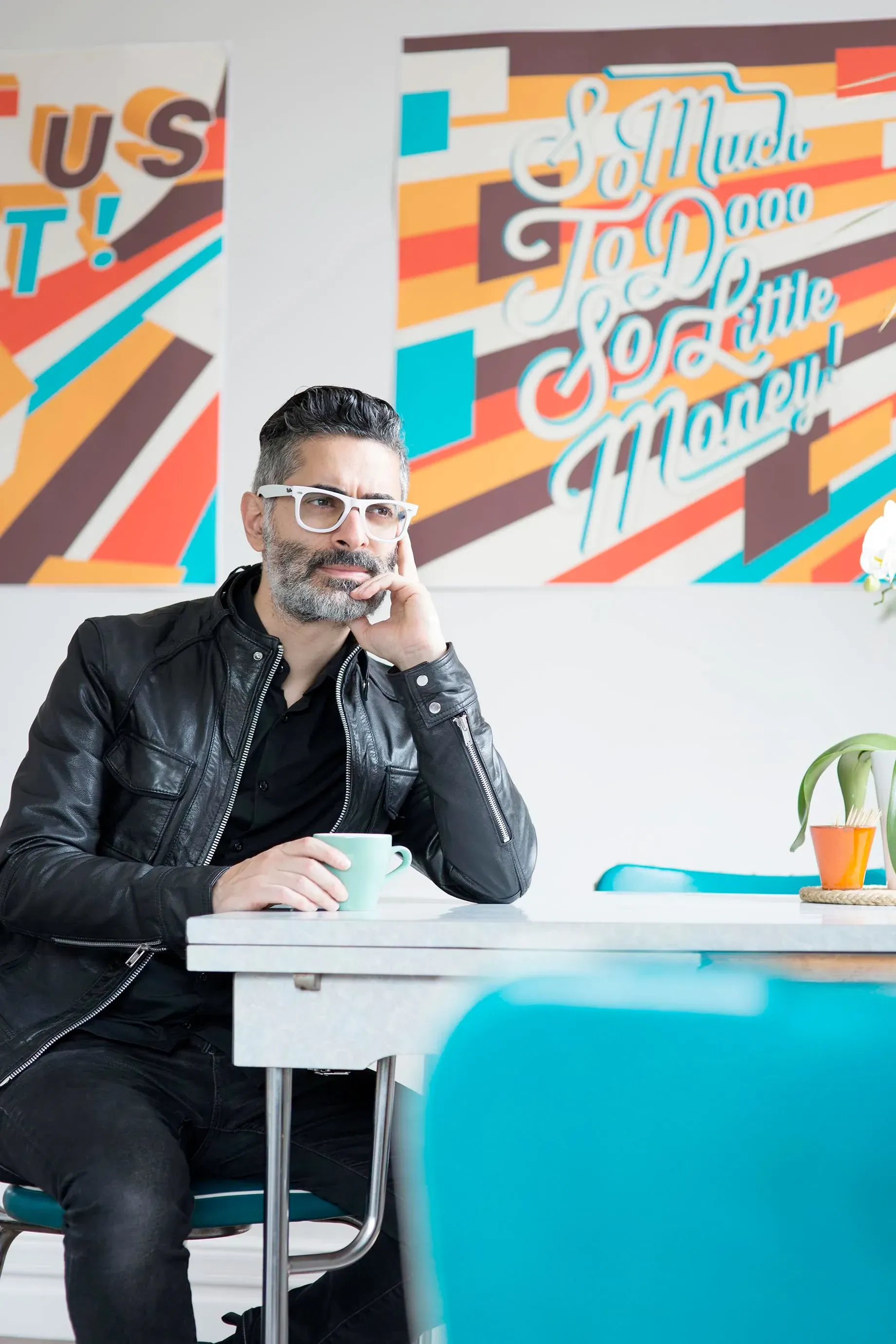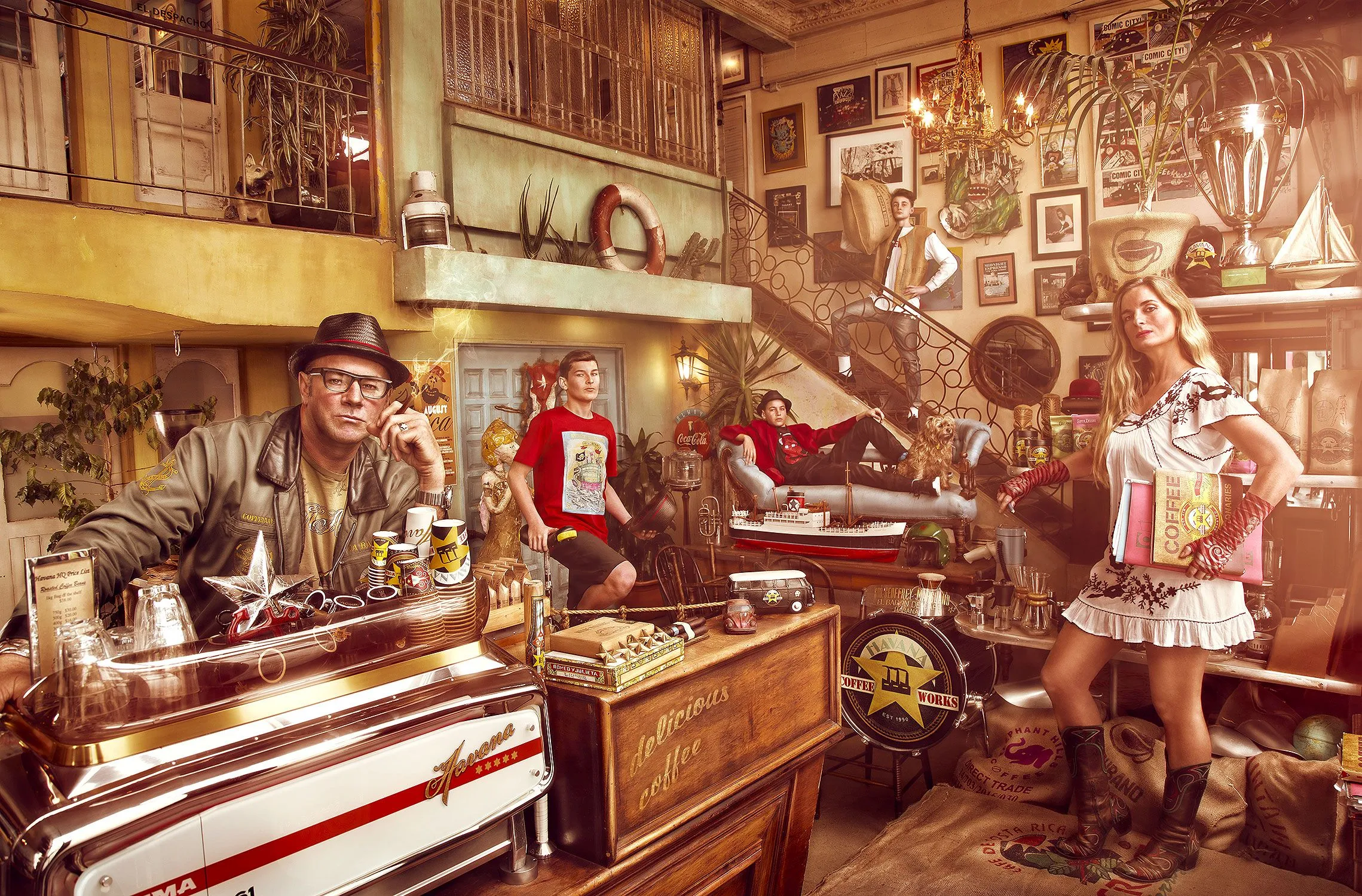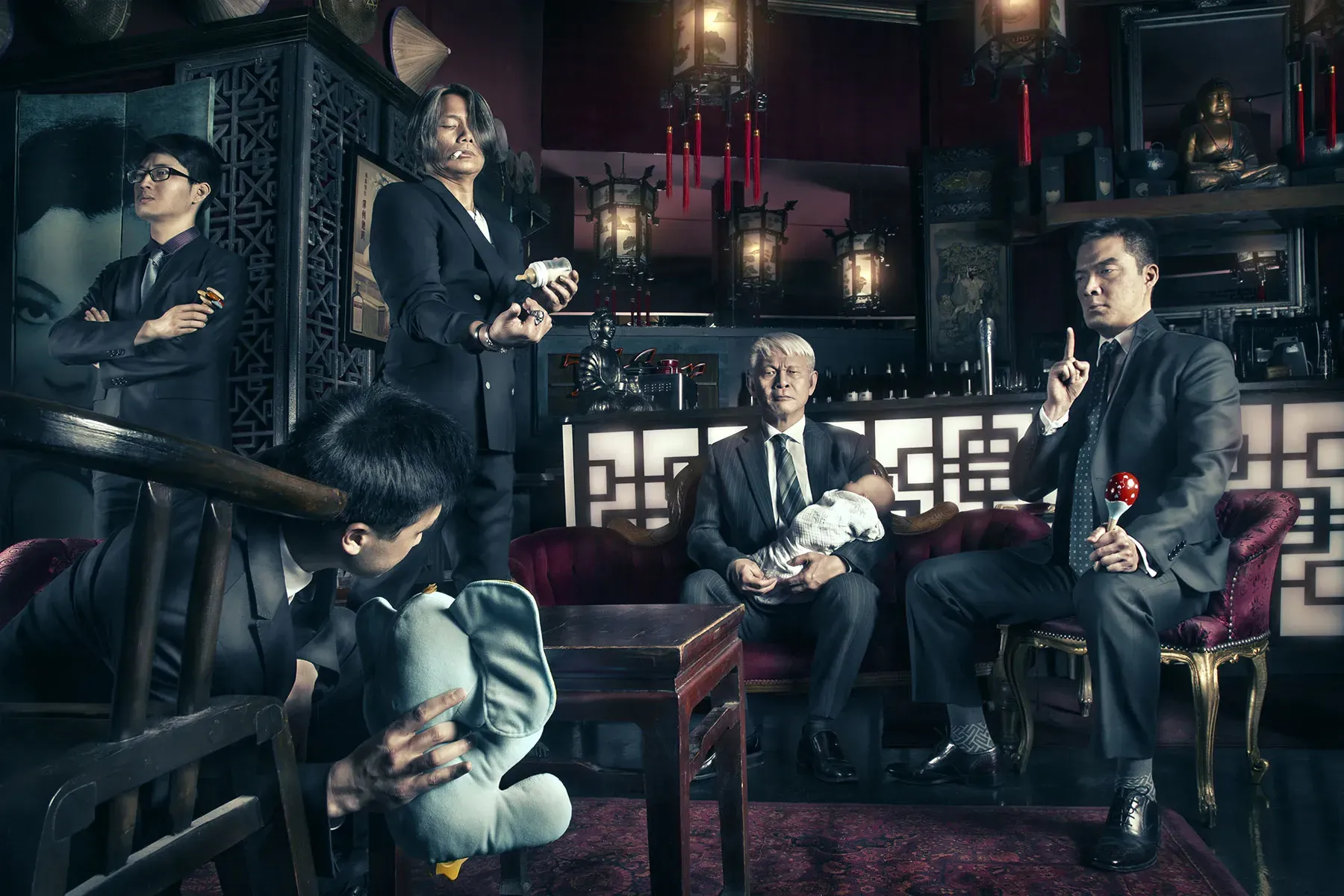Mardo El-Noor: Organised chaos
Written by

All of us have sides of ourselves that we don’t necessarily know how to present through the personality that we inhabit. We are limited by the social tools we are born with, or childhood learnings that have lead to us express parts of ourselves strongly and confidently, while keeping others hidden within the folds of our mother's dresses. For photographer and videographer, Mardo El-Noor, his art forms the road to express the parts of himself that without it, would remain invisible to the outside world.
A jack of many trades, Mardo El-Noor has released five albums with EMI and Sony, made three animated films, mastered the realms of photography, graphic design and typography, and more recently, moved into the art of creating music videos. He has just finished working on the soon-to-be-released music video ‘Shine’ for the Modern Māori Quartet. One can easily feel overwhelmed, or even openly jealous, by the sheer amount of talent that is wrapped up in this list. Fortunately, behind all that talent is a humble soul who carries a gentle humour as he talks through his many career choices before finding the one that fits.
Reminiscing on releasing four albums with EMI and one with Sony, Mardo insists, “I wasn’t an amazing musician. I was good at pretending how to sound good, but believe me I wasn’t good at all. I could only play from two keys really.” Well into the depths of a successful music career, Mardo had two insightful realisations: a) music wasn’t the intoxicating and all-encompassing force that it was for his fellow musicians, and b) he didn’t buy music or go to live gigs. “I realised that I wasn’t being true to myself,” he says, “I was just an onlooker. I look back at that time and think of all those musicians and here’s this guy who doesn’t want to be called a musician and then he just scored a deal with one of the biggest record labels in the world. I realised I shouldn’t have done that.”
Just like that, he sold all his instruments and called it quits.
Guided by this ideal of being true to himself, Mardo has explored many different avenues to find the medium that provides the most honest expression of how he perceives the world. His journey through that exhaustive list of skills above have all been part of a pathway towards his desire to telling people's stories in a way that portrays the universal truths of human interaction. For this, is his true passion.
A self-proclaimed introvert, Mardo says that his art is the crutch with which he can overcome his own perceived social limitations to fulfill his genuine interest in people and their stories. “I use my art vicariously to get closer to people,” says Mardo, “because I don’t have the balls to just go out there and just start talking to people. A lot of times I use it as an excuse to talk to people, or my genuine interest in people can only be expressed through the work itself.”
Across all his artistic mediums is an overarching theme of dynamism with pieces of the story layered upon each other adding a complexity that makes interaction with his work a process of discovery. Again, almost like an expression of an alter-ego, Mardo says that his work in its essence portrays the antithesis of himself. “In my work I love clutter, details, layers and it is the opposite of myself. If you meet me, I only dress in black. Even though my work is colourful and loud and busy, I am the total opposite of that.”
Through his photographic works, Mardo creates scenes based in real life but viewed through a hyper-real lens where his subjects are immortalised as dramatic characters in their own life. “My job is to curate their stories and present an ideal version of themselves, almost like a polished version of themselves.” The resulting scenes are exuberantly overflowing with colour, action and life in the truest sense of the word.

The scenes that Mardo creates are always based around the characters response to a past or impending action. This, he feels, is at the centre of what gives his work a certain universality. “I’d like to think that a scene that I create will appeal anywhere in the world. It’s a reaction to a scene and I try to break it down, distill it all the way to the mere interaction between people regardless of the environment. I’m more interested in those universal truths of human interaction regardless of where those people are from.”
Like a true storyteller, Mardos works begin with taking the time to get to know his subjects. “The process always starts with a conversation. I ask them about themselves and get to know their story. That way, whatever story I come up with, they feel like they were part of creating it.” Every single object and teeny tiny detail is planned to capture the complexity of these people’s lives in just one image.
The magic of this approach is that Mardo transforms the creation of art into an activity so that those people whose story he is representing will not only have the photograph, but the memory that is attached to it. “It’s also an activity for those people so they will always remember when this artist came to their place and turned everything upside down. It was a fun day and that moment in time will last with them forever.”

Across all his creative endeavours, the theme that ties everything together is organised chaos. Again, sitting at odds with his public persona. While he claims that he’s had to learn the hard way that one cannot be good at everything, upon considering his work, it appears that all aspects of his creative spectrum feed into each other to create a certain aesthetic that is uniquely, well... Mardo. “When I make music videos, I think of every single shot to look like a perfect poster. Every shot is beautifully composed,” he says. “Due to multidisciplinary nature of my work, I like my music videos to look like posters, I like my photography to look like frames from film, I like my graphic design to look like typographic artwork.”
Mardo explained a familiar sounding creation process that he accepts as part and parcel of doing a new work. Many of you may recognise the triumphant cycle of self-doubt that permeates (and often undermines) the work of the best creatives. For Mardo, “the process of creating something goes from ‘this is good’ to ‘I don’t know about this’ to ‘this is terrible’ to ‘maybe I can do this’ all the way to ‘this is good’. I swear it’s with every project I work with. I start with high hopes and then as I start working on post production I start doubting it. I can only get to the point of ‘this is really good’ once I hit the ‘this is not working’.”
As a teacher, Mardo’s advice to the young creatives is to build relationships. Talk to people about your work, and ask them about theirs. He says that he often learns from showing his work to people from completely different backgrounds and listening to their response. “I tell people who want to tell stories, they need to learn those stories, they need to connect with people. They don’t have to be amazing photographers, they just need the story. If at the heart of your work there is storytelling, then you better be a good storyteller.”
Check out more of Mardo’s work:
Photography:
- Personal Stories Exhibition, 2-15 October, Ponsonby Central (Auckland Art Week)
- Tom Scott Cartoon reWorks, collaborative work with political cartoonist, Tom Scott, The Waikato Museum, August 2018
Video:
- Mardo is on the Roster of Directors at Fish&Clips where there is a fine selection of his video work
- Expect to see both Mardo’s photography and video work when the Modern Māori Quartet return to NZ from Edinburgh in September and tour their album, That’s Us!
Mardo El-Noor is an ART Venture 2016 participant - an initiative of Arts Regional Trust Te Taumata Toi-a-iwi (ART) with delivery partners The Big Idea. Reflecting on his experience, Mardo says “ART Venture was such a beautiful experience. We were taken out of our practices and pushed against each other to inspire each other. There is no equivalent to it anywhere else in the creative sector.”
World of Mardo
